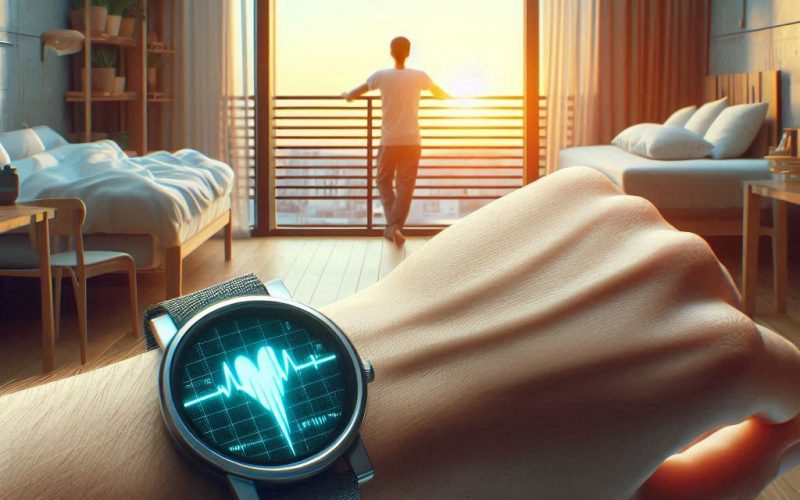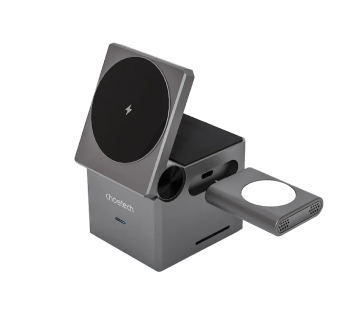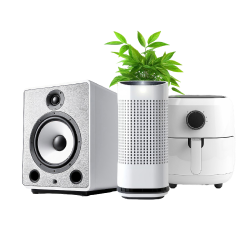Do you want to keep an eye on your heart rate around the clock? If so, a heart rate monitor can be incredibly beneficial. Knowing how to effectively use the information an HRM collects can reap numerous benefits for your health and fitness.
Most consumers use a heart rate monitor to customize their workouts, making their exercise routines more meaningful, productive, and intelligent. With a heart rate monitor, individuals can optimize their workouts by ensuring they are exercising within their target heart rate zones. This is particularly beneficial for people with heart conditions, as it lets them know precisely when to take a break and resume their workout once their heart rate has stabilized.
In this article, we will explore the top 6 heart rate monitors of 2024. We will also discuss the benefits of using a heart rate monitor, the different types available, and the key features to consider when choosing one. Also, we will announce the best heart rate monitors for specific activities such as running and cycling. Without further ado, let’s dive in.
Table of Contents
Why Use a Heart Rate Monitor?
There are several reasons you should buy a good heart rate monitor. For one, it optimizes workout intensity, meaning that it helps you to stay or get in your target heart rate zone. There are 5 zones: low intensity, moderate intensity, aerobic, vigorous intensity, and maximum intensity. By optimizing your workout, you will achieve your fitness goals without getting fatigued and straining your cardiovascular system.
If you’re performing high-intensity interval training (HIIT), a good HRM will help you make the most of it. With it, you will not burn yourself out. Overworking your heart can have adverse consequences such as excessive fatigue that will affect your daily activities and your quality of life. A heart rate monitor helps you understand your progress and determine how long it will take you to recover and achieve your fitness goals the next time you go to the gym.
There are more benefits to using an HRM. Using a complex algorithm, your exercise companion can calculate calorie expenditure. But please note that it is just an estimate. A workout outside your target heart rate zone can lead to burning glucose instead of fat, resulting in the opposite of the desired effect.
Also, it is important to note that if you want to elevate your workouts with some additional features further, you may opt for the best fitness trackers in 2024. While HRMs primarily focus on providing highly accurate heart rate data, fitness trackers offer various health metrics like steps and sleep. Also, if you have fluctuating blood pressure, you may want to opt for these blood pressure watches instead.
Types of Heart Rate Monitors
Heart rate monitors come in various forms for individuals with different preferences. Each of these HRMs offers distinct features and advantages depending on your fitness goals. Make sure to thoroughly read this section to understand what type suits your needs best.
Chest Strap Monitors
Chest strap HRMs are very accurate and reliable. You need to wear them around your chest and the monitor will use electrodes to measure your heart rate and transmit the data to a connected device, such as a watch or smartphone. Chest strap monitors are favored by athletes and fitness enthusiasts for their precision during high-intensity workouts.
Wrist-Based Monitors
Wrist-worn heart rate monitors are integrated into fitness watches and smartwatches. With optical sensors, these intelligent devices detect blood flow and measure your heart rate. They are not as accurate as chest strap monitors, but they still get the job done. One of the advantages of wrist-worn monitors is that they are more comfortable for continuous wear.
Finger Sensors/Pulse Oximeter
This type of HRM measures heart rate through a fingertip sensor and is often used in clinical settings or by individuals monitoring their heart rate for health reasons rather than during exercise. Even though they provide quick, on-the-spot readings, they are not the best option for your everyday physical exercises.
Ear Clip Monitors
Ear clip monitors aren't as popular as other types, but they still may be of use to many consumers. They measure your heart rate by clipping onto your earlobe, which can be handy for activities like cycling or running. However, some people find them less comfortable due to the pressure on your earlobe. This discomfort might make it harder to stay focused during your workout. But if you're fine with a tad of discomfort and want accurate data, they can still be useful, especially for those activities where other types of monitors might be impractical.
Arm Band Monitors
Similar to chest straps, armband monitors are worn around the upper arm and use optical sensors to measure heart rate. This design provides a comfortable and secure fit during various activities – hence the popularity among athletes and fitness enthusiasts who prioritize accuracy and convenience in their heart rate tracking. With their adjustable straps and lightweight construction, armband monitors offer a balance between comfort and performance. With an armband monitor, you can fully focus on your workouts without distractions.
Smart Rings
If you want to get a stylish heart rate monitor then you should opt for smart rings. Although they are new to the market, the tests show incredible results. These heart rate monitors use optical detection to measure your heart rate. However, further testing and revamping still need to be done before they become as accurate as the other types.
Smartphones
Several smartphone applications available on different platforms allow users to measure their pulse rate. Some of these apps utilize optical detection methods, where users place their finger over the camera lens, and the camera's flash illuminates the blood vessels under the skin to determine the pulse rate. Alternatively, other apps use the smartphone's camera pointed at the user's face to detect pulse rate changes through subtle skin variations that are not visible to the naked eye.
Key Features to Consider
When selecting the perfect heart rate monitor, make sure to thoroughly read this section as we cover the essential features that greatly influence your fitness journey. These features are not only about accuracy and precision but the overall user experience as well. From compatibility and comfort to battery life and extra features, understanding these aspects can help you make a well-informed decision and choose a heart rate monitor that fits your needs and preferences.
Accuracy and Precision
One of the most crucial factors to consider when selecting a heart rate monitor is its accuracy and precision in measuring heart rate. A reliable monitor should ideally provide consistent and accurate readings across various physical activities. Look for monitors with advanced sensor technology with cutting-edge hardware and algorithms and validation from reputable sources to ensure reliable performance.
Compatibility
Consider the compatibility of the heart rate monitor with your current devices. Ensure that the monitor seamlessly integrates with your smartphone, fitness watch, or other devices. This will allow you to sync data and access insights easily. Compatibility with popular fitness apps and platforms can also enhance your overall tracking experience.
Comfort and Fit
The comfort and fit of the heart rate monitor are essential for long-term wearability and user experience. Choose a monitor that feels comfortable against your skin and stays securely in place during physical activity. Adjustable straps, lightweight materials, and ergonomic designs can contribute to a comfortable fit and minimize distractions during workouts.
Battery Life
Battery life is another critical consideration, especially for users who love to work out regularly. Opt for a heart rate monitor with a long battery life for uninterrupted tracking. It’s better to pay a little more, but minimize frequent battery recharges. Also, consider factors such as charging time and battery indicator features for more convenience.
Additional Features
Explore additional functionalities offered by the heart rate monitor for a more productive user experience. Features such as waterproofing, for example, allow you to swim and track your heart rate while swimming. GPS tracking, activity tracking, and smartphone notifications can provide valuable insights and convenience during workouts.
Top Heart Rate Monitors of 2024
Here’s our list of the best HRMs of 2024. We have carefully selected these heart rate monitors based on their accuracy, features, and user reviews to help you find the perfect fit for your fitness needs. From casual exercisers to dedicated athletes, these top-rated heart rate monitors will no doubt meet your needs. Now let’s see which one suits your needs best.

Polar H10
This premium chest strap delivers top-notch heart rate accuracy for all kinds of physical activities. Made with comfortable silicone, it features advanced connectivity and internal memory for a single training session.
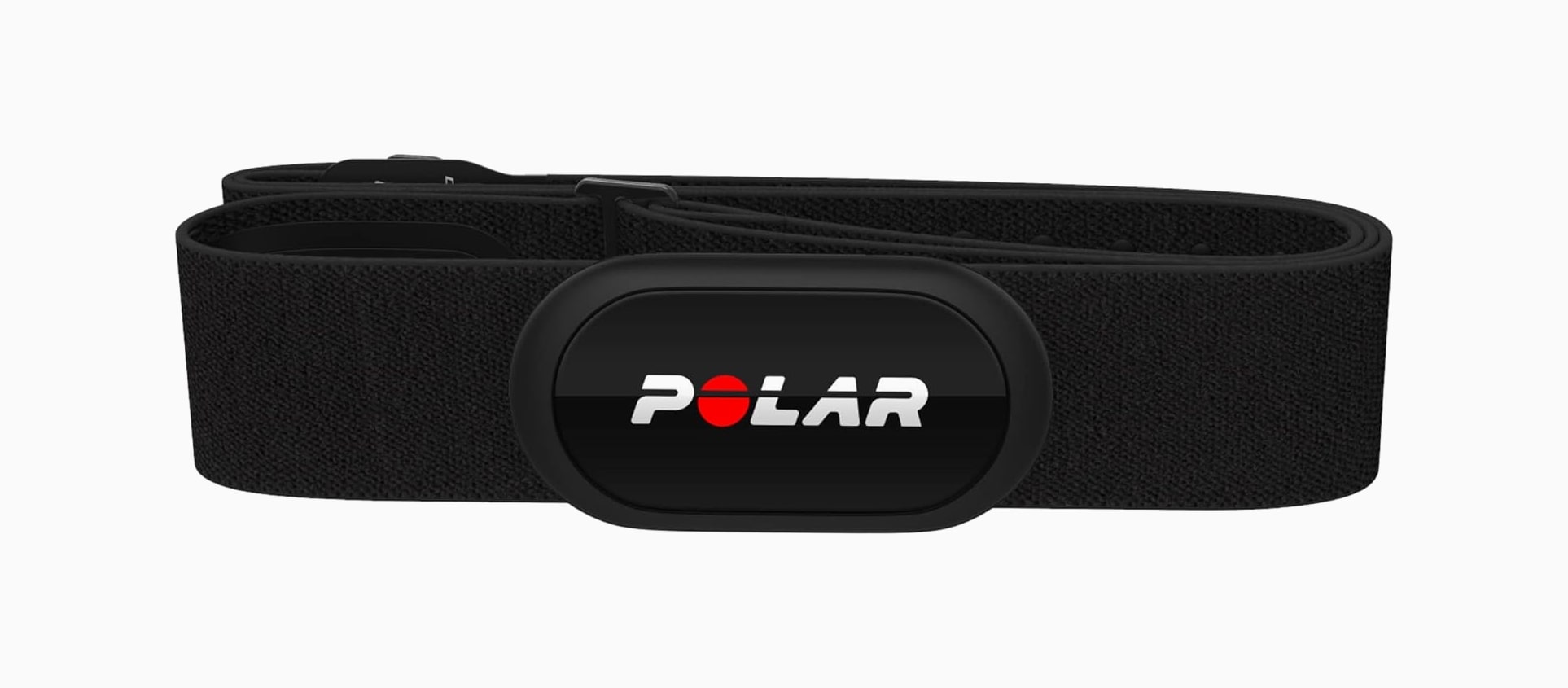
- Key Features and Specs: The Polar H9 heart rate monitor offers super precise tracking and connects easily to Bluetooth and ANT+ devices. It's waterproof and can store data internally. Perfect for running, cycling, and gym workouts, it's lightweight, easy to wear, and has a small screen. Plus, its lithium battery lasts a long time.
- Pros: The Polar H10 is very accurate and comfortable to wear. Plus it’s waterproof.
- Cons: Some devices might have trouble connecting with it. And according to user reviews the customer service isn't the best.
- Price: $89
- Link to Purchase: Amazon
MYZONE MZ-Switch HRM
The MyZone MZ-Switch offers versatile wear options, allowing you to switch easily between the wrist, arm, and chest. It tracks physical activity to earn MEPs in various settings, including the gym, outdoors, and while swimming, making heart rate training accessible for those who prefer not to wear a chest strap.
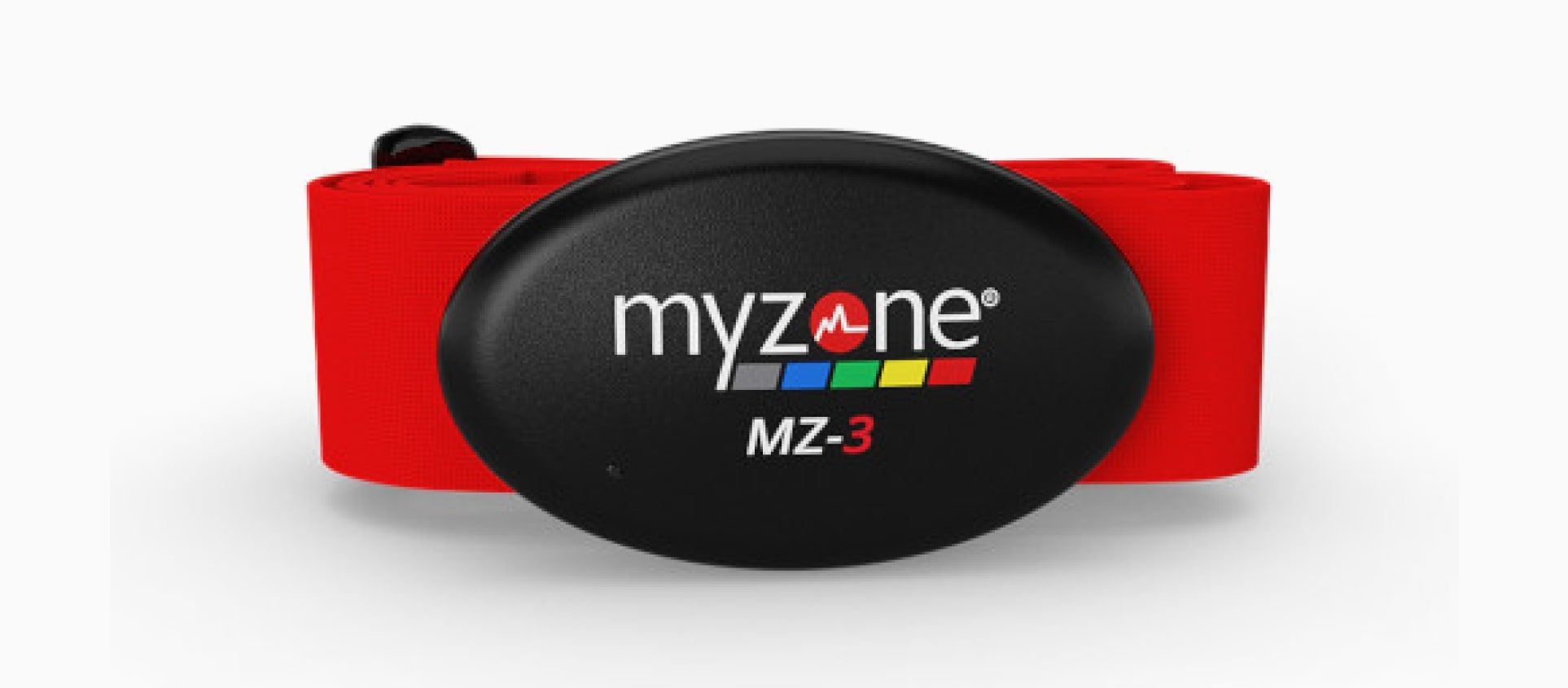
- Key Features and Specs: Myzone MZ–Switch is waterproof up to 10 meters and offers a battery life of up to six months on a single charge. With a screen size of 0.96 inches, it weighs only 0.19 kilograms and has a PPG sensor that is used to detect volumetric changes in blood in peripheral circulation.
- Pros: The MZ-Switch works well once fully charged. With versatile straps for the wrist and arm, and can be used for swimming.
- Cons: The device has issues with connectivity to some devices, often cutting out and failing to accurately record workouts.
- Price: $177
- Link to Purchase: Amazon
Polar H9
This affordable yet reliable HRM is ideal for everyday sports. It offers accurate tracking across a range of activities. With this chest strap monitor, your cardio workouts are effective and your fitness journey is seamlessly integrated with your favorite apps.

- Key Features and Specs: Accurate heart rate tracking with 400-hour battery life, Polar H9 connects to various devices (watches, phones, gym equipment) via Bluetooth and ANT+. Improves training effectiveness, and works with popular fitness apps (Polar Beat, Nike+ Run Club).
- Pros: The Polar H9 delivers top-notch heart rate tracking and helps you stay in target zones for optimal workouts. It's easy to set up and track progress.
- Cons: Polar H9 struggles with connection at times requires restarts and has no free tier.
- Price: $71
- Link to Purchase: Amazon
Wahoo Tickr X
With a synthetic material, Wahoo Tickr X weighs only 48 grams. So you won’t even feel it’s there when working out. It’s compatible with many devices and even has special features for tracking indoor cycling, running stats and so much more. It tracks heart rate, calorie burn, and workout duration in real time, syncing with third-party apps effortlessly.
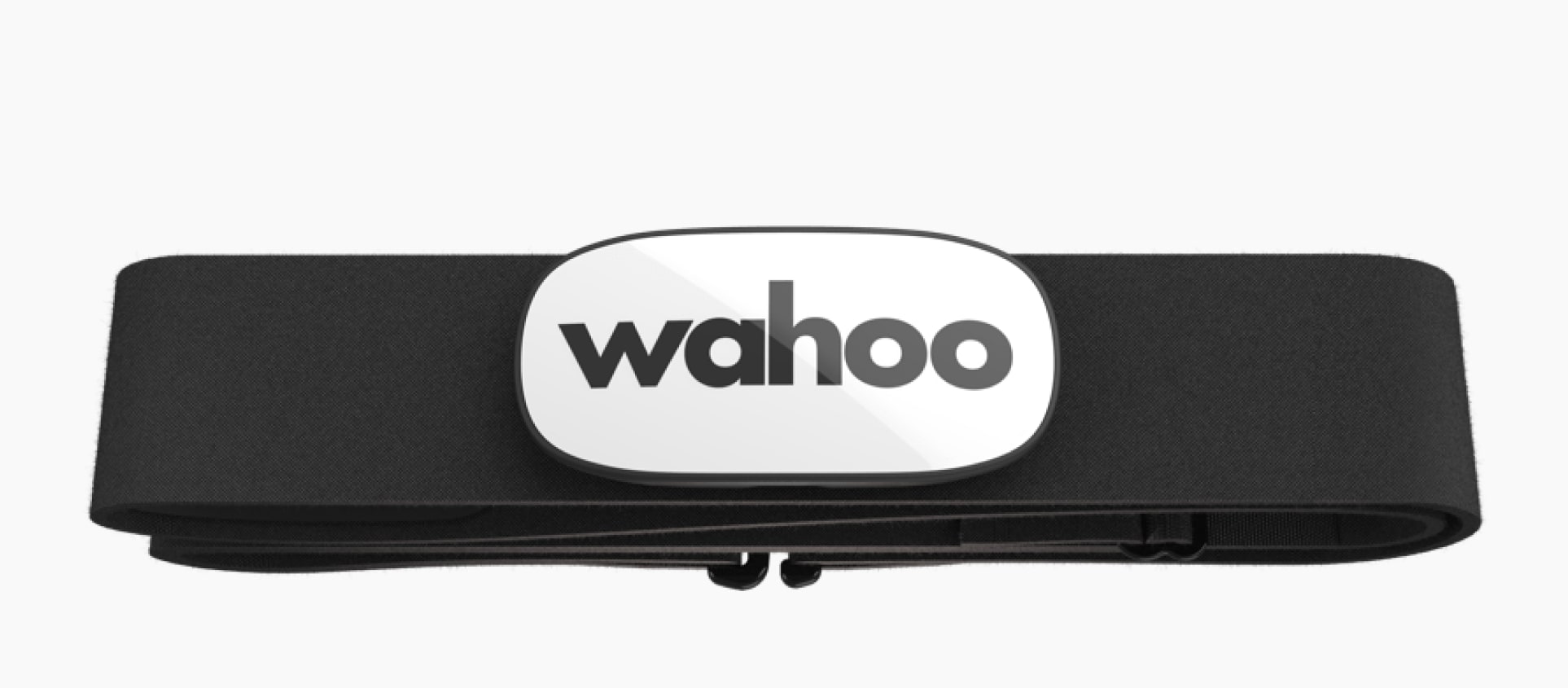
- Key Features: 50 hours of onboard memory, indoor cycling cadence, and running analytics. With dual-band technology and integrated chest strap design, it ensures a secure fit and connection, while LED lights display connection status during workouts.
- Specs: 0.96-inch screen and advanced compatibility with iOS 11 or newer devices (compatibility with Android varies), 500-hour battery life powered by a CR2032 coin cell battery.
- Pros: Comfortable to wear, accurate data readings.
- Cons: Some users have reported inaccuracies with erratic heart rate readings.
- Price range: $79-$100
- Link to Purchase: Amazon
Garmin Vivomove Sport
The stylish 40 mm hybrid smartwatch combines a timeless analog look with smart features, offering up to 5 days of battery life in smart mode and an additional day in watch mode. It provides extensive health monitoring, smart notifications, GPS connectivity for outdoor activities, and safety features like Incident Detection and Assistance, ensuring comprehensive all-day activity tracking and connectivity with your smartphone.
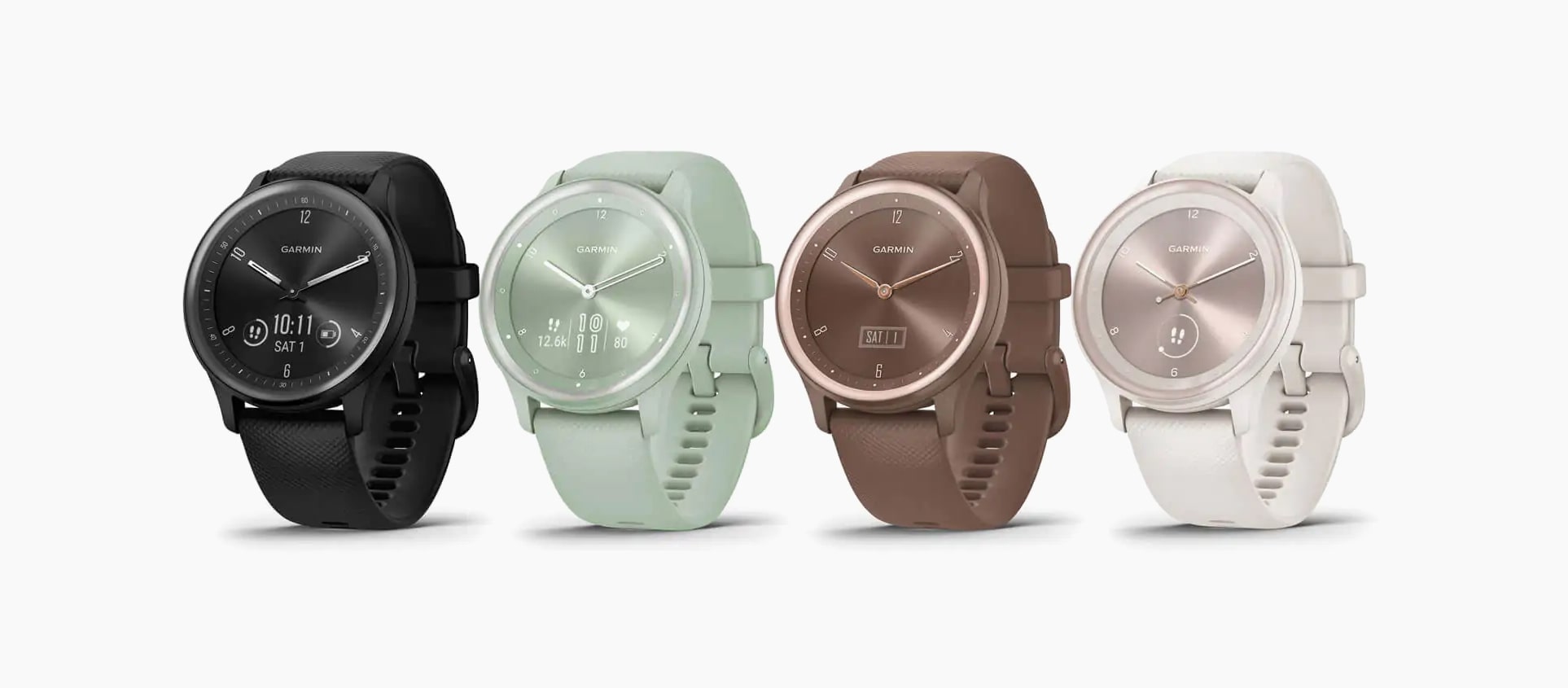
- Key Features and Specs: Featuring a timeless analog design with smart notifications, GPS connectivity, and sleep/stress tracking, this smartwatch offers up to 5 days of battery life and includes safety features like Incident Detection and Assistance.
- Pros: The smartwatch offers great value with accurate sleep tracking, a stylish hybrid design, and a 5-day battery life.
- Cons: It occasionally freezes, the watch face is prone to scratches, the silicon band shows signs of wear, and it sometimes inaccurately records sleep data late at night.
- Price range: $179
- Link to Purchase: Amazon
Polar OH1
With versatility wear options, this HRM allows freedom of movement for various sports by attaching to your arm or temple. It features a comfortable soft textile armband and a swimming goggle strap clip, with a rechargeable battery and in-built memory for convenient workouts.
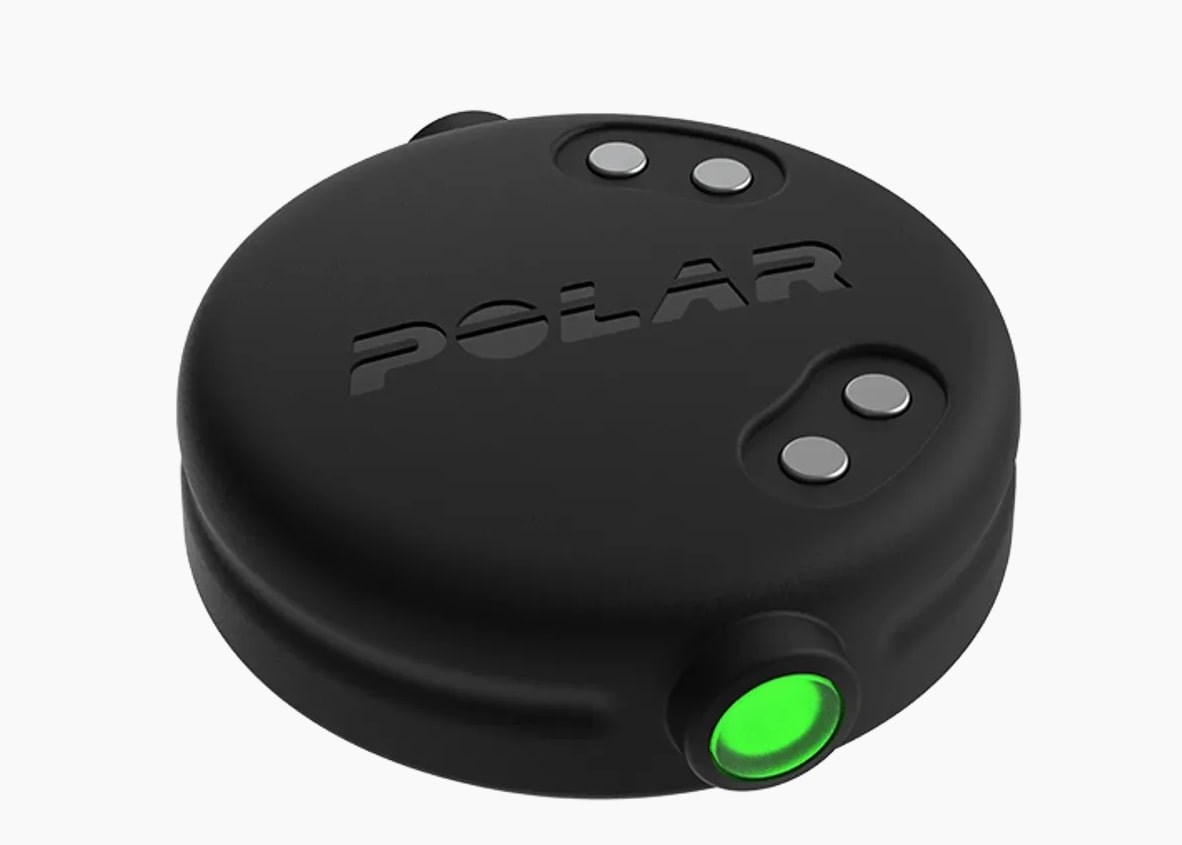
- Key Features and Specs: The OH1 connects via Bluetooth or ANT+ to apps like Polar Beat, Strava, and Nike, as well as various sports watches and gym equipment. Crafted from durable nylon in sleek black, features a 0.96-inch screen, compact dimensions of 3.69"L x 0.41" W x 0.37"H, weighing 77 grams, powered by a lithium-ion polymer battery.
- Pros: Users praise the product for its convenience and accuracy during workouts. It successfully pairs with devices and is easy and very user-friendly
- Cons: Some users reported that the device abruptly stopped working, and attempts to seek support from Polar yielded no resolution, with certain functions, like data storage and Bluetooth connectivity.
- Price: $59.95
- Link to Purchase: Amazon
Best Overall
The Polar H10 is the top pick overall. It's really accurate and comfortable to wear with its silicone material. It connects easily, works in water, and even stores data. Although it may have some connection issues, its benefits outweigh them.
Best for Running
For running, the Wahoo Tickr X is great. It's light, gives accurate readings, and offers some great features like indoor cycling stats.
Best for Cycling
Wahoo Tickr X is also ideal for cycling. It's light, accurate, and has special features for cycling. Plus, the battery lasts a long time.
Best Budget Option
If you're on a tight budget, go for the Polar OH1. It tracks well, fits in different places, and works with lots of devices and apps.
Best Premium Option
For a premium choice, consider the MyZone MZ-Switch HRM. It's pricier but has versatile wear options, tracks accurately, and works in water. Great for serious fitness enthusiasts.
Choose the Right Heart Rate Monitor for You
Choosing the right heart rate monitor depends on your fitness goals, preferences, and budget. If you're a running enthusiast or cyclist, a chest strap monitor, for example, would be a better option than wrist-based monitors. These straps offer more accurate readings and are really comfortable to wear. However please remember that it is not carved in stone and you may not like the pressure around your chest. Make sure to test it before ordering one online.
If you’re a fitness buff who’s really into cardio, wrist-based monitors are the way to go. These monitors include smartwatches that often provide convenience and continuous tracking throughout the day. But they may not generate as accurate readings as chest strap monitors. Anyway, unlike chest straps they won’t hinder different types of physical exercises like burpees.
For those focused on heart health, a medical-grade monitor with features like ECG functionality may be necessary. Consider factors such as battery life, waterproofing, and compatibility with fitness apps when making your decision. Ultimately, you should opt for a heart rate monitor that fits seamlessly into your lifestyle and helps you achieve your fitness objectives safely and effectively.
Conclusion
The market is flooded with different types of heart rate monitors, each designed for specific purposes. The type you choose largely depends on your fitness goals. For instance, if you’re a running enthusiast, you may prefer chest strap monitors for their accuracy and convenience. It’s essential to ensure that the features of the heart rate monitor match your preferences before making a purchase. By carefully considering your individual needs and key features like battery life and compatibility, you can select the heart rate monitor that best suits your fitness journey and will serve you in the long run.
FAQ
What is a heart rate monitor and how does it work?
A heart rate monitor is a device used to measure your heart rate during physical activity or rest. It typically consists of a sensor that detects your heart rate and a display unit to show the readings.
Why should I use a heart rate monitor?
Using a heart rate monitor can help you track your intensity levels during exercise as it is important that you work out in your target heart rate zone for optimal results and safety.
Are heart rate monitors accurate?
Heart rate monitors are mostly accurate when used correctly, but factors like device placement and individual differences may affect their precision. For the most accurate readings, consider factors like chest strap monitors. Chest strap monitors are more accurate because they directly measure electrical signals from the heart.
Can I use a heart rate monitor without a smartphone?
Yes, you can use a heart rate monitor without a smartphone by opting for standalone devices with built-in displays, such as traditional wrist-based monitors or chest strap monitors with dedicated display units.

